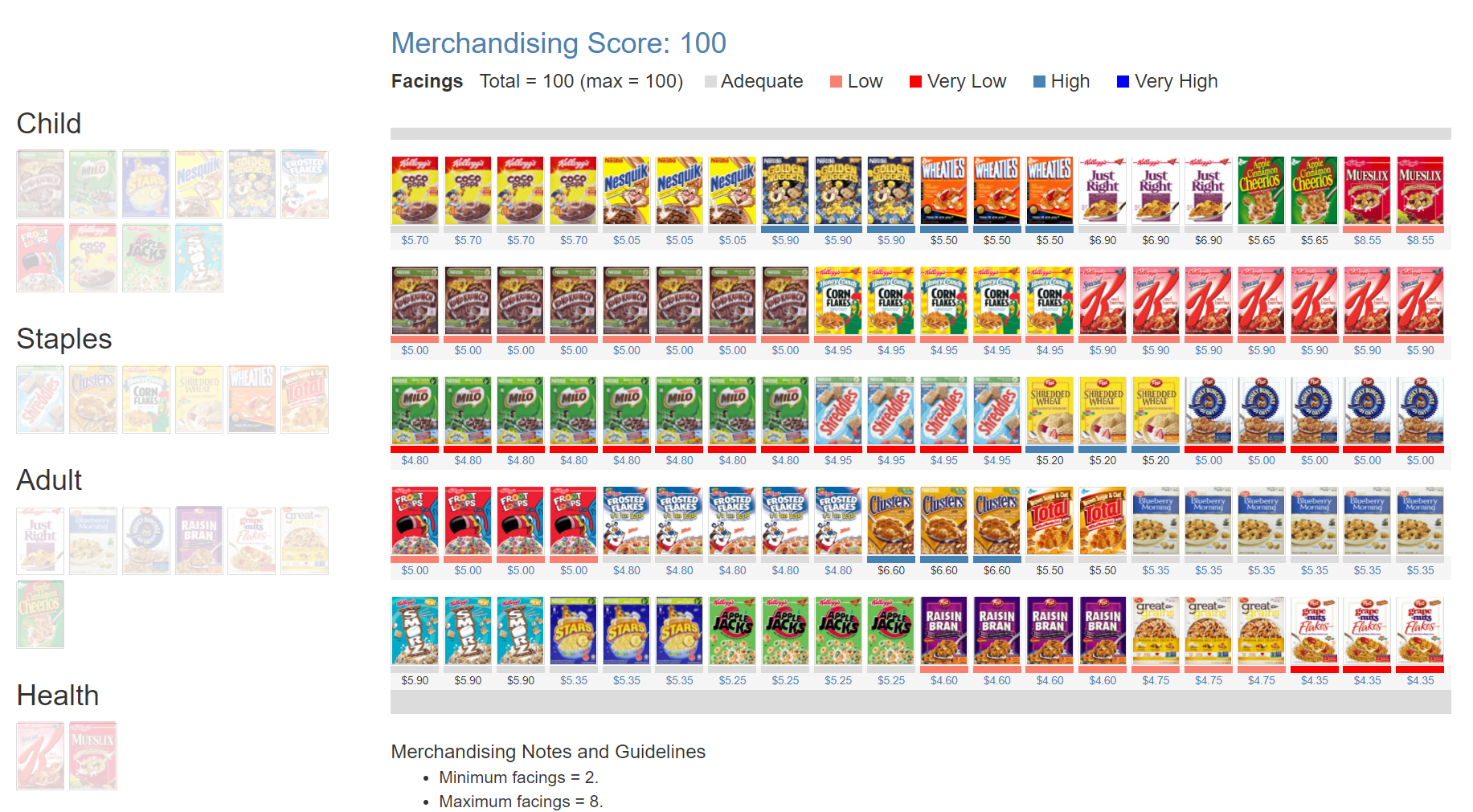-
Sales & Distribution
Sales and Distribution
Interdependence of Demand and Supply
Components of Sales — Width & Depth
Measures of Distribution (Width)
Sales and Distribution Priorities
Distribution Network — Basics
Relationship between Sales and Distribution
Right Channels, Right Chains
Right Assortment
Managing Assortment
Battle of Shelf Space
Measures of Assortment and Sales Velocity
Number of Items Stocked
Assortment Analysis
Sales per Point of Weighted Distribution
Share in Handlers
Average Sales per Store
Rate of Sales
Rate of Sales/Gross Profit
Portfolio Analysis
Fragmentation Analysis
Securing Retailer Support
Managing Stock in Trade
Allocation of Shelf Space
Cost of Stockouts
- Retail Tracking
- Sales and Distribution
- Retail Analytics
- Category Management
- Marketing Education
- Is Marketing Education Fluffy and Weak?
- How to Choose the Right Marketing Simulator
- Self-Learners: Experiential Learning to Adapt to the New Age of Marketing
- Negotiation Skills Training for Retailers, Marketers, Trade Marketers and Category Managers
- Simulators becoming essential Training Platforms
- What they SHOULD TEACH at Business Schools
- Experiential Learning through Marketing Simulators
-
MarketingMind
Sales & Distribution
Sales and Distribution
Interdependence of Demand and Supply
Components of Sales — Width & Depth
Measures of Distribution (Width)
Sales and Distribution Priorities
Distribution Network — Basics
Relationship between Sales and Distribution
Right Channels, Right Chains
Right Assortment
Managing Assortment
Battle of Shelf Space
Measures of Assortment and Sales Velocity
Number of Items Stocked
Assortment Analysis
Sales per Point of Weighted Distribution
Share in Handlers
Average Sales per Store
Rate of Sales
Rate of Sales/Gross Profit
Portfolio Analysis
Fragmentation Analysis
Securing Retailer Support
Managing Stock in Trade
Allocation of Shelf Space
Cost of Stockouts
- Retail Tracking
- Sales and Distribution
- Retail Analytics
- Category Management
- Marketing Education
- Is Marketing Education Fluffy and Weak?
- How to Choose the Right Marketing Simulator
- Self-Learners: Experiential Learning to Adapt to the New Age of Marketing
- Negotiation Skills Training for Retailers, Marketers, Trade Marketers and Category Managers
- Simulators becoming essential Training Platforms
- What they SHOULD TEACH at Business Schools
- Experiential Learning through Marketing Simulators
Measures for Distribution (Width)
Distribution, the metric commonly used for tracking product availability, has several variations — purchase, sales, and handler distribution; in-stock and out-of-stock (OOS) distribution; forward stock and total stock. It is calculated as a numeric ratio and as a weighted ratio, and the weights may be in volume or value.
The following are key measures, encompassing various terms and variations, that are pertinent to distribution:
- Handler: A store is considered a product handler during a time period if it stocked the product at any time during that time period. Thus, if the store has recorded any opening or closing stock, purchase, or sale of the product, it qualifies as a handler for that particular time period.
- Numeric Distribution: Percentage of stores handling product.
- Weighted Distribution: Percentage of stores handling product weighted in value or volume, by product category sales. This is equal to the trade share of category sales by handlers. (Unless otherwise specified, distribution is weighted in terms of category value sales).
- Numeric Sales Distribution: Percentage of stores selling product.
- Weighted Sales Distribution: Percentage of stores selling
product weighted by product category sales. This is equal to trade share of category
sales by the outlets selling the product.
Note: Since information on stocks is not captured in scan data, for scan channels, the numeric and weighted distribution is computed in terms of numeric sales distribution and weighted sales distribution.- Numeric Purchase Distribution: Percentage of stores purchasing product.
- Weighted Purchase Distribution: Percentage of stores purchasing product weighted by product category purchases.
- All commodity value (ACV) weighted distribution: Whereas weighting of stores on category sales is the norm, for certain categories, it is advisable to assign weights based on ACV (i.e., the sales value of all categories) or based on a collection of related categories. This practice is particularly beneficial for small, new, or growing categories that have a limited number of brands. For such categories, ACV weighted distribution is a better indicator of the quality of distribution.
Numeric Distribution tells us the proportion of stores distributing a product. Weighted distribution, on the other hand, reveals the product’s presence as percentage of category sales by handlers. It is a better reflection of the quality of distribution.
Usually, the weighted distribution of a product is greater than its numeric distribution. This is because bigger stores typically carry more brands; they tend to be the stores that brands would enter into first.
Previous Next
Use the Search Bar to find content on MarketingMind.
Online Apps to train Category Managers

The Plannogrammer is an experiential learning facility for category managers, trade marketers, and retailers in consumer markets. Ideally suited for hybrid learning programmes, Plannogrammer imparts hands-on training in the planning and evaluation of promotions and merchandising.
It supports a collection of simulation and analysis platforms such as Promotions and Space Planner for optimizing space and promotions, Plannogram for populating shelves and merchandising, a Due To Analysis dashboard that decomposes brand sales into the factors driving sales, and a Promotion Evaluator to evaluate the volume, value and profit impact of promotion plans.
Contact | Privacy Statement | Disclaimer: Opinions and views expressed on www.ashokcharan.com are the author’s personal views, and do not represent the official views of the National University of Singapore (NUS) or the NUS Business School | © Copyright 2013-2025 www.ashokcharan.com. All Rights Reserved.





